“Deep Winter Needs the Colors of Scandinavia” (Part One)
February 6, 2024 2 Comments
Becketwood is a senior housing cooperative in Minneapolis, located in the Longfellow neighborhood on a beautiful bluff overlooking the Mississippi River. Becketwood has an active fine arts committee, including several weavers. The committee invited the Scandinavian Weavers to present an exhibit in their gallery space.
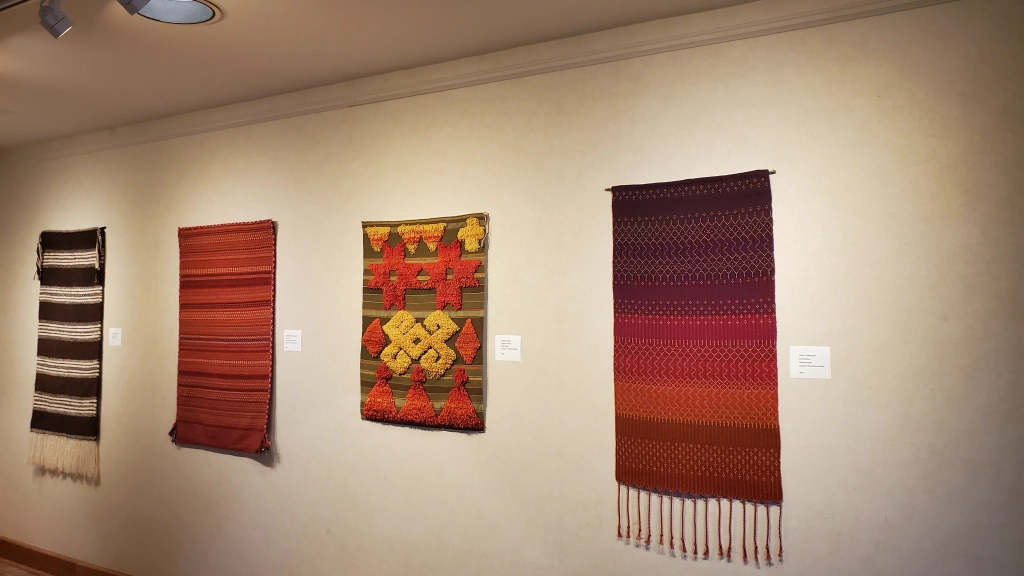
Our goal was to present a wide variety of traditional Scandinavian techniques. Since we were expecting our usual harsh Minnesota winter, we named the exhibit “Deep Winter Needs the Colors of Scandinavia.” Alas, it has been unseasonably warm with almost no snow. Nevertheless, the bright colors of the weavings are a welcome sight.
Kevin Olsen, who specializes in Scandinavian tapestry techniques, wove a wreath pattern called Betrothal, traditionally woven to celebrate an engagement. “Since my husband and I had already been married for six years when I wove the tapestry,” Kevin explains, “I called mine Anniversary instead. I included irises and peonies, which were our wedding flowers, while the tulips are a traditional motif.” The six red roses stand for the six years Kevin and his husband had been married. In the spirit of betrothal tapestries, Kevin included the date and an image of the marriage certificate.
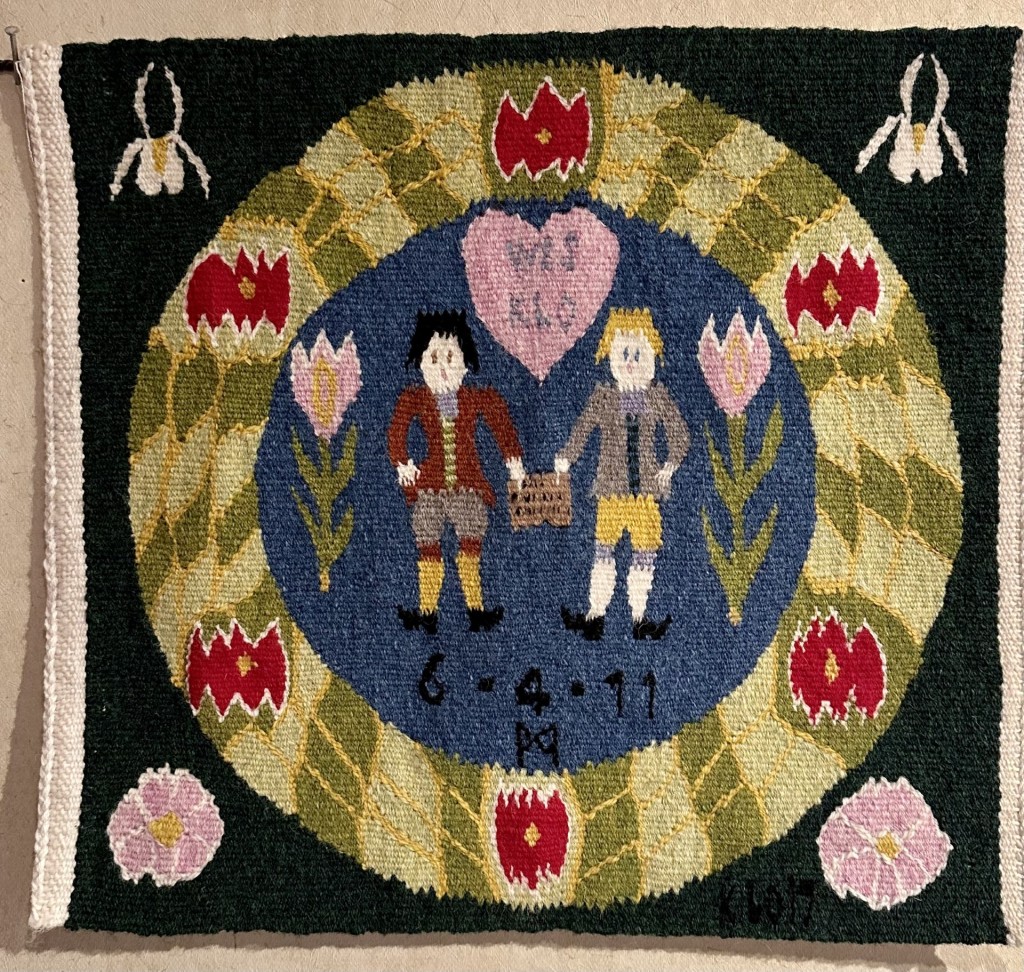
A vitrine showcases woven bands, a common element of Scandinavian folk costumes. As seen below right, Jane Connett used card-weaving to create a wide belt for a bunad (traditional costume). In this ancient technique, warp yarns run through holes in square cards. Each single card has four holes, one in each corner, and dozens of cards may be combined to create intricate patterns. After each weft shot, the cards are turned forward or backward to create the next element of the pattern.
Below center, Judy Larson wove a smaller band using a heddle or bandgrind. In this portable technique, the weaver raises and lowers the heddle to create the open sheds through which the weft passes. To weave designs, the warp strings can be picked up individually and a curved knife is used to beat in the weft yarn.
The charming tea cozy in the background was woven by Marie Nordland (1909-2000), the aunt of current Scandinavian Weavers member Nancy Ellison. Marie was a member of De Norske Vevere (the Norwegian Weavers), a group in the Weavers Guild of Minnesota that was a forerunner of the Scandinavian Weavers Study Group. She used a variety of techniques in her tea cozy, including krokbragd, danskbrogd, and rya.
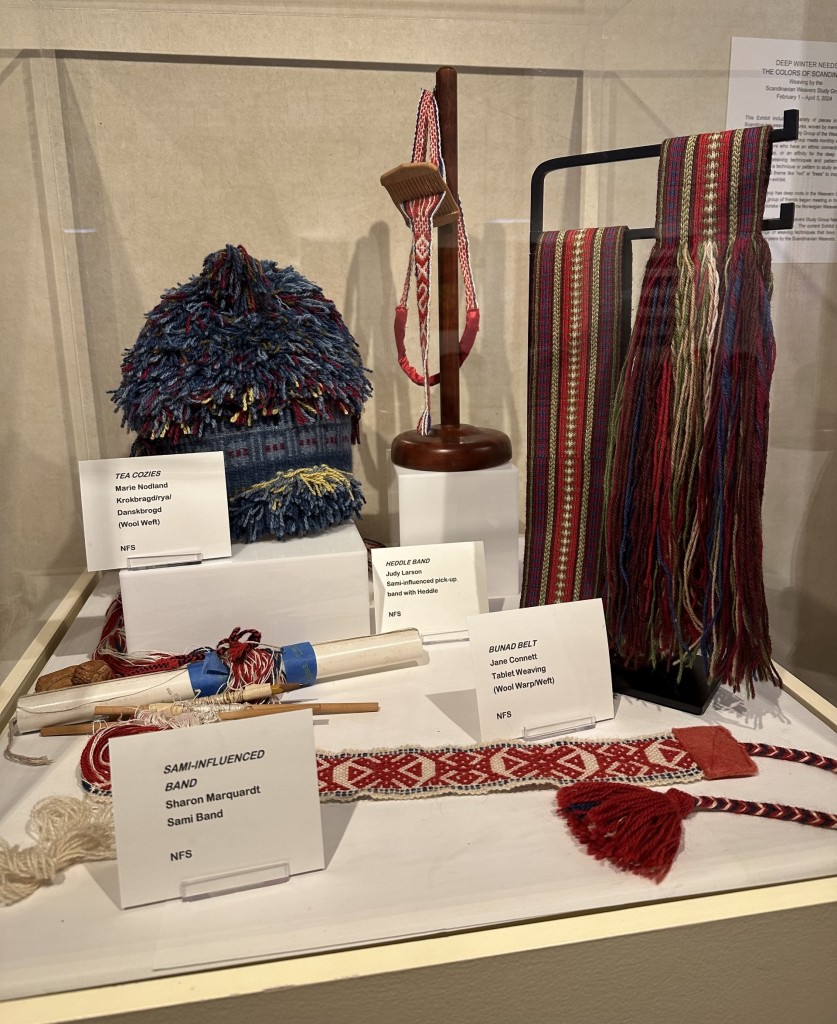
Sharon Moe Marquardt wove the Sami-style band in the foreground using a simple tube loom. She added miniature Sami boots that she purchased at the husflidlag (handcraft association) in Manndalen, a Sami community on Kåfjord, east of Trømso in Norway, where she learned the technique.
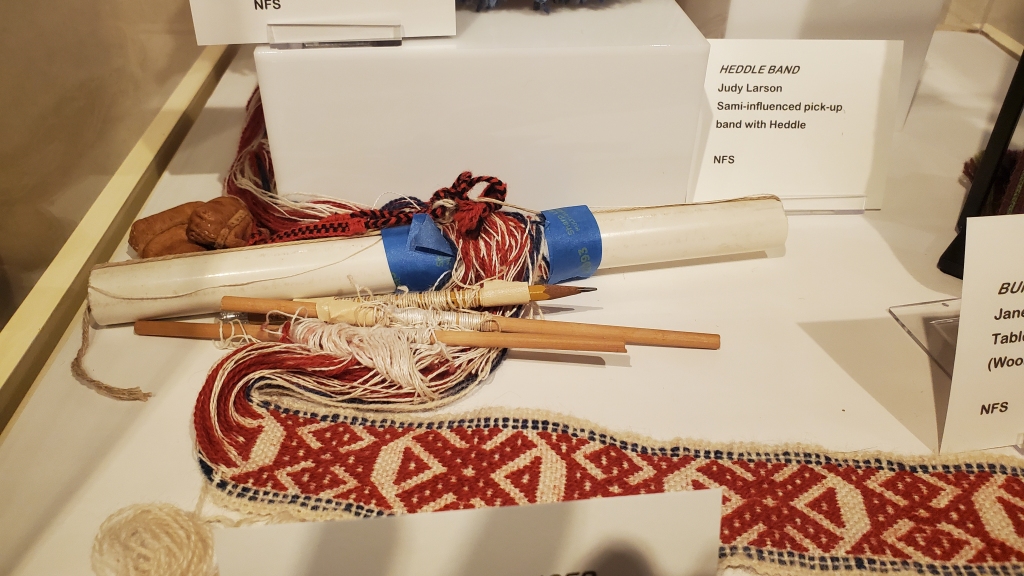
Syvilla Bolson (1928-2011) wove the wall hanging below in Flesberg technique, a style of three-shaft bound rosepath from the Flesberg region in Norway. Syvilla was a beloved member of the Scandinavian Weavers for many years. (Learn more about the flesberg technique in the November, 2020, issue of the Norwegian Textile Letter.)
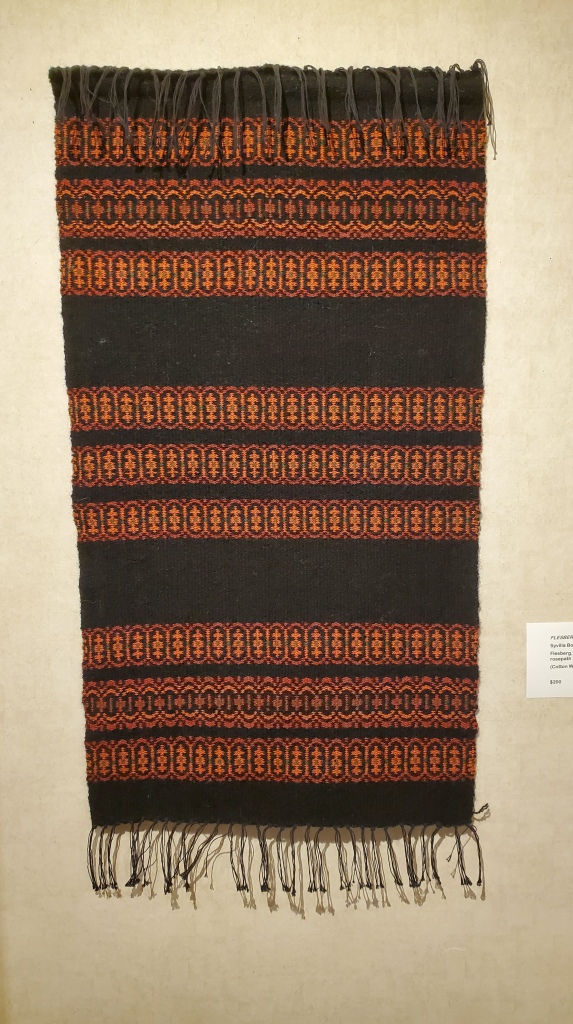
Jan Mostrom wove the rutevev wall hanging below, evocatively named “Old Soul.” Rutevev, or square-weave, is a geometric weaving technique using single or double interlock joins.
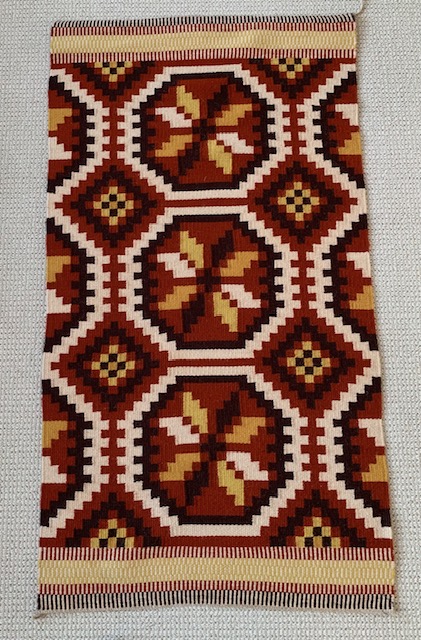
Ann Haushild, a Becketwood resident and long-time study group member, wove this colorful hanging in Vestfold technique, named after the Vestfold region in Norway. It is an inlay technique, in which weft yarn is laid in to create the designs. (There is more on this technique in the February, 2020, issue of the Norwegian Textile Letter.)
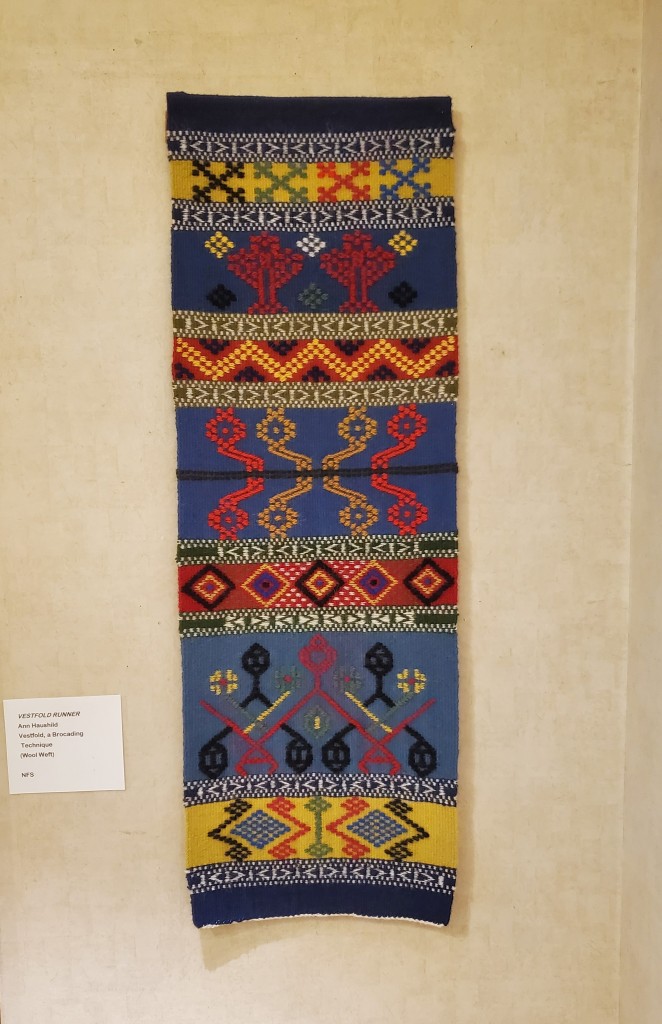
Last year, the Scandinavian Weavers set up a group warp to weave in telemarksteppe technique. (See previous blog posts for more photos of this technique.) Kala Exworthy wove the beautiful version below in colors inspired by the natural world.
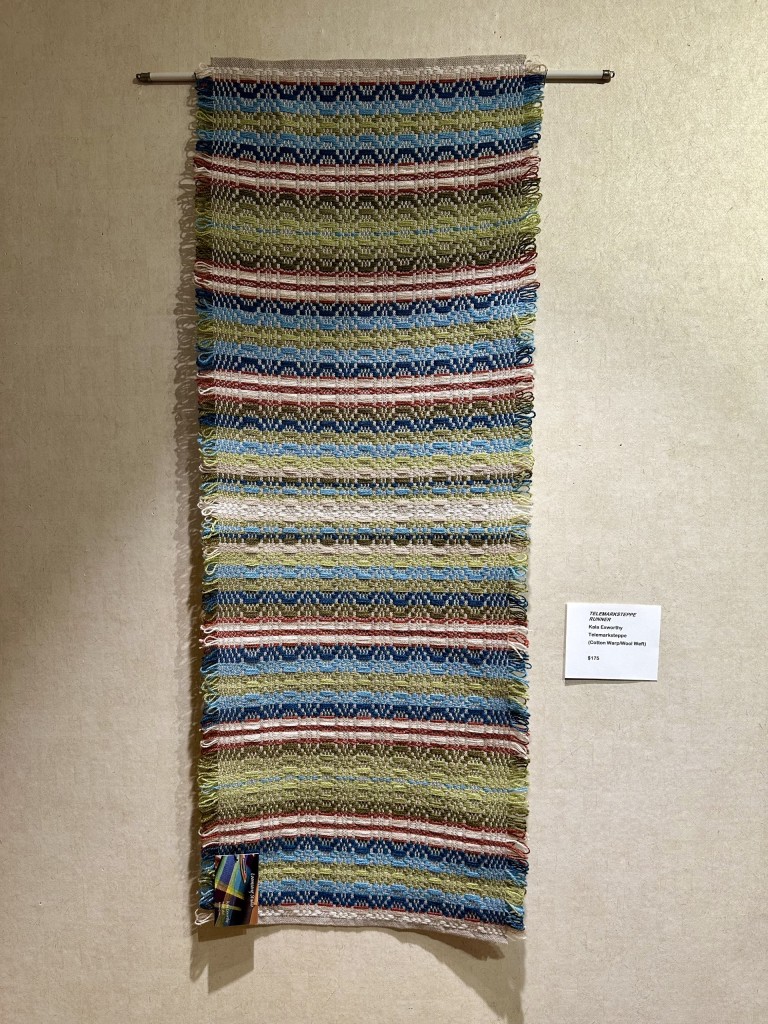
Rya is a traditional pile technique. Marilyn Moore’s lush version below was inspired by the colors in her expansive flower garden.
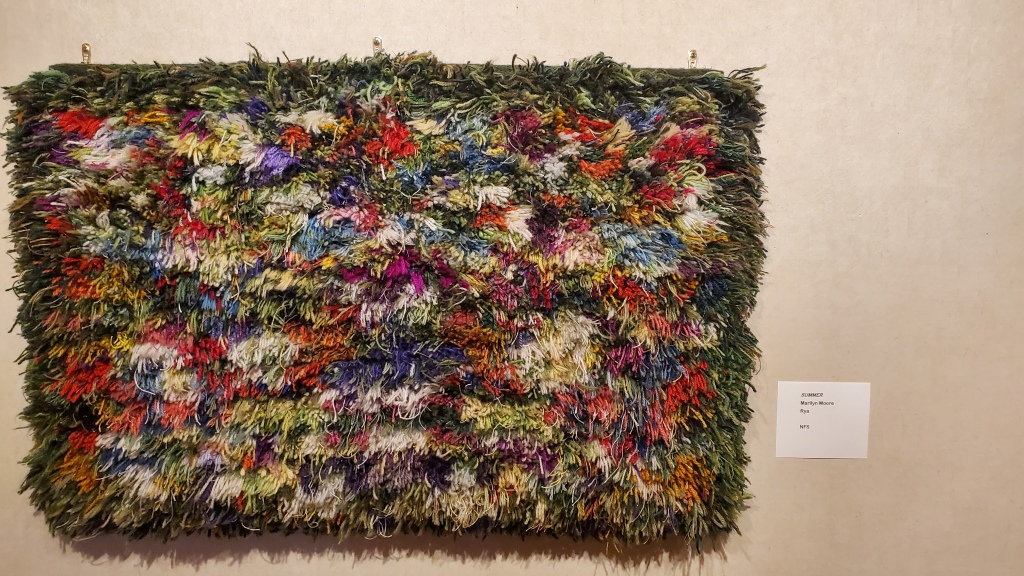
Nancy Ebner wove a rutevev wall hanging called “Divine Order.” The original pattern drawing was produced in the 1930s by Linnea Kullman (Johansson), a student at Johanna Brunsson’s Weaving School in Stockholm, Sweden. Nancy discovered the pattern in the historical collections at the Nordisk Museum (via digitalmuseum.se).
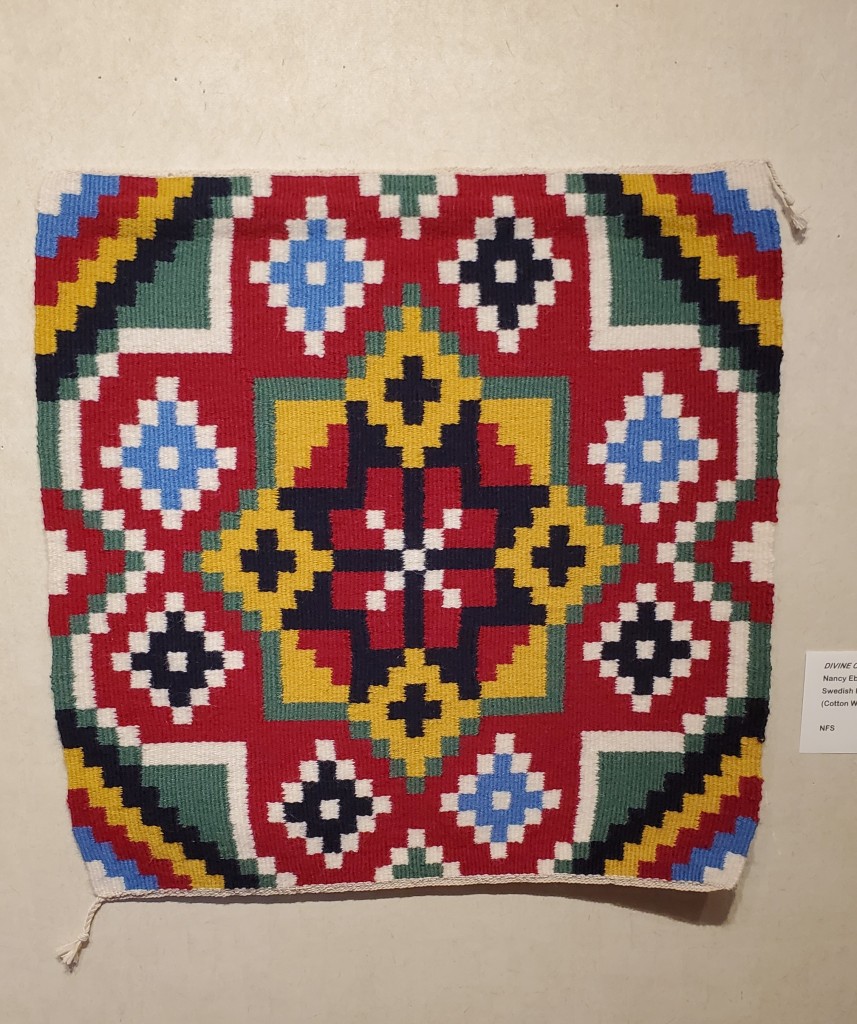
Brenda Gauvin-Chadwick wove the pillow below, called “Joy Exploding,” in rosepath technique. “The pillow was woven with Fåro yarn that I purchased in Sweden many years ago,” she writes. “I carried it all over Scandinavia for weeks in my suitcase. I bought it after skiing the Swedish Vasaloppet. Two weeks later in Norway I skied the Birkebeiner race. The colors represent the forests, the beautiful sunshine and my heart exploding with joy as I skied along!”
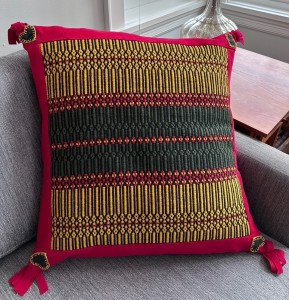

Robbie LaFleur’s weaving below is in double krokbragd technique. Called “The Old Pattern” it includes a sheepskin backing and fringe. (Read the full article from the Norwegian Textile Letter on the old pattern.)
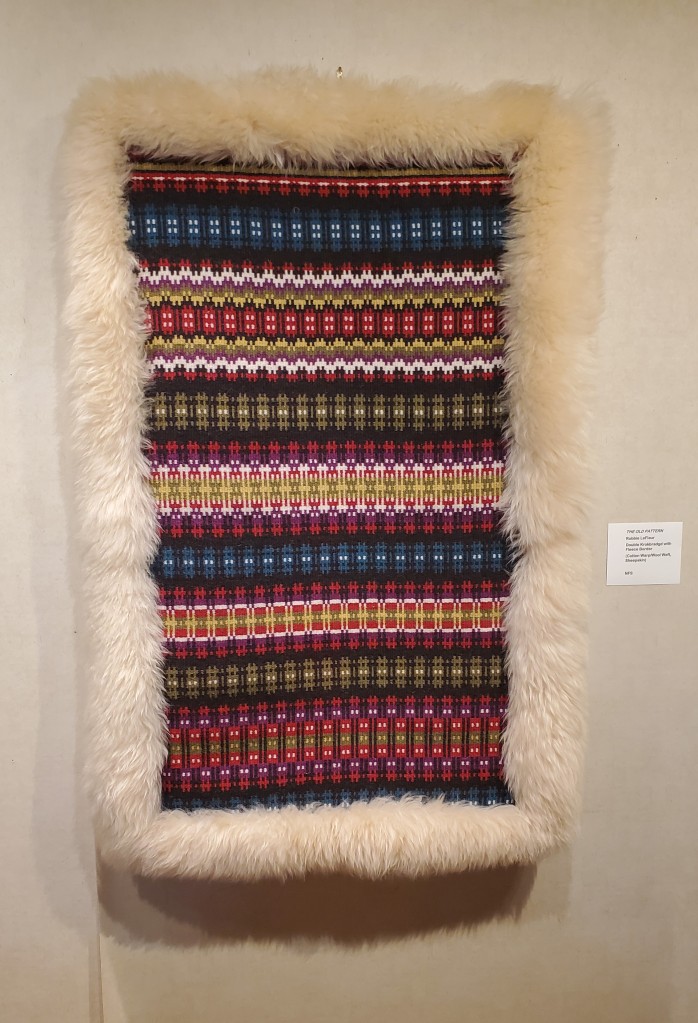
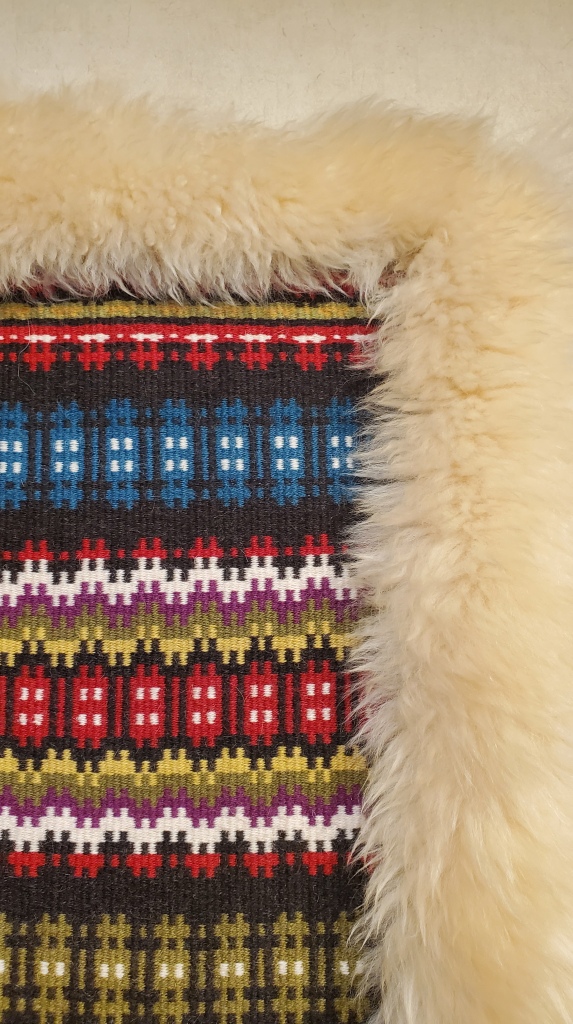
Stay tuned for more blog posts featuring photos from the exhibit, which will be on view through April 4.
If you would like to visit the exhibit, please call the Becketwood front desk at (612) 722- 4077 prior to your visit to make sure the galleries are open for viewing.